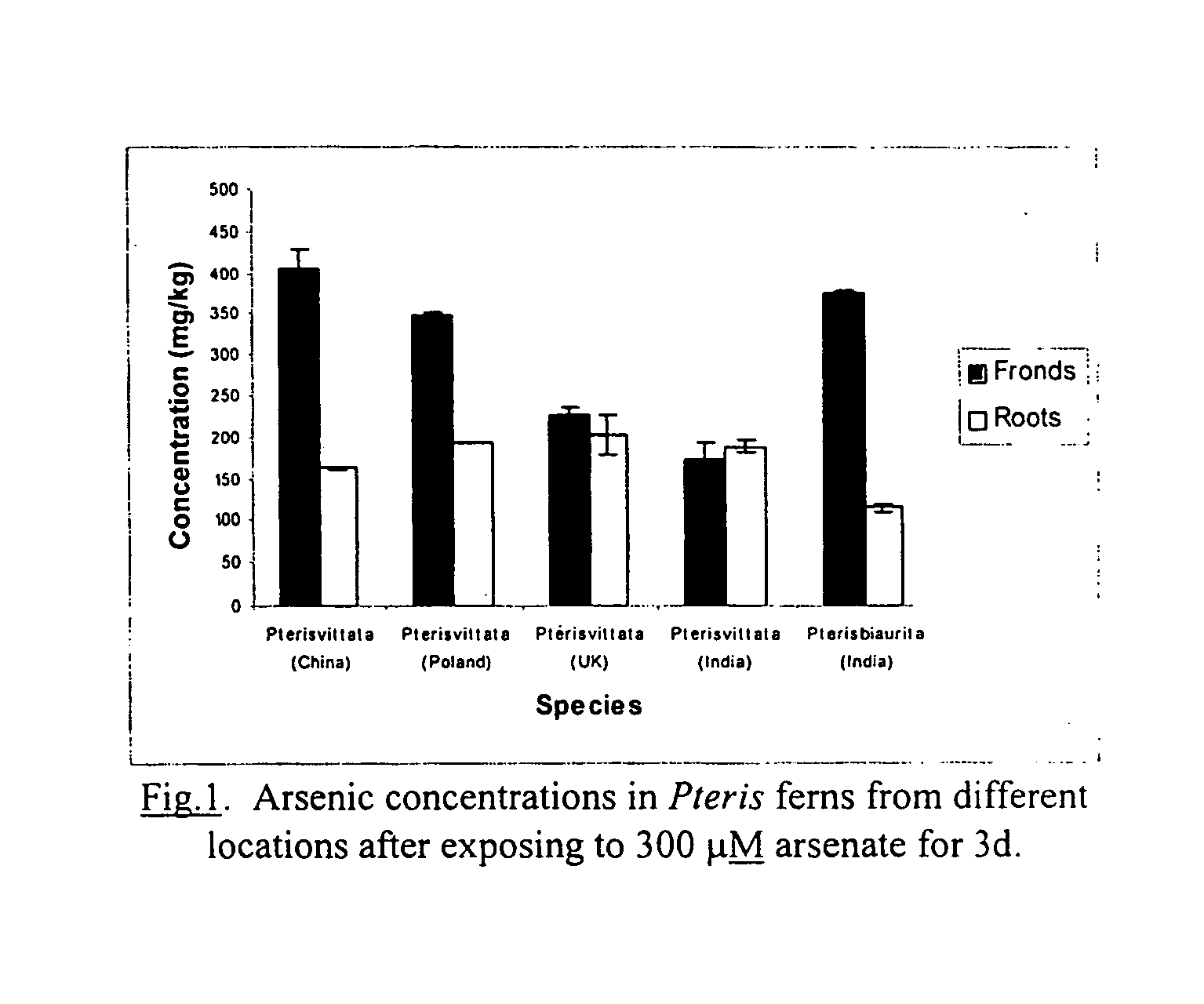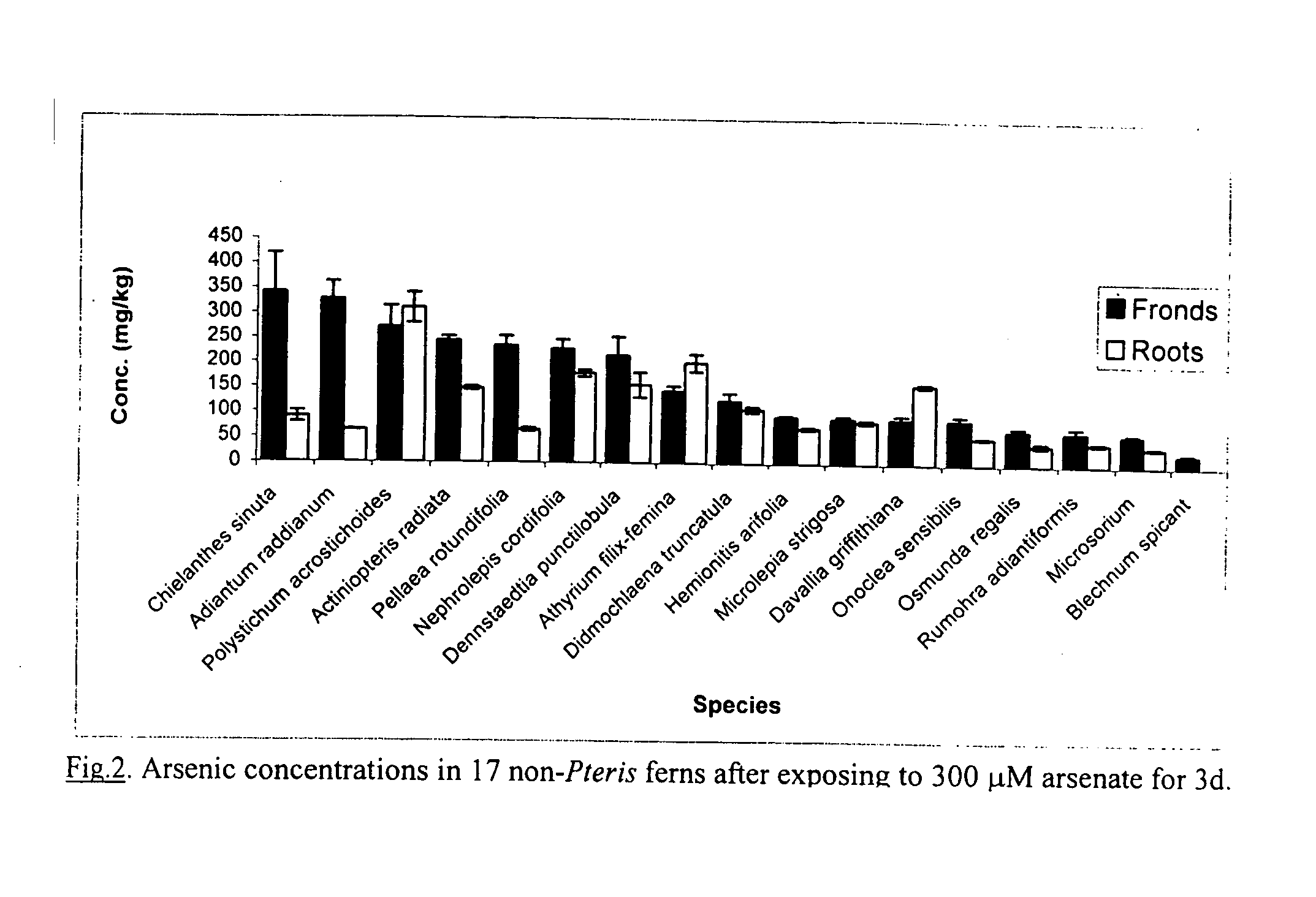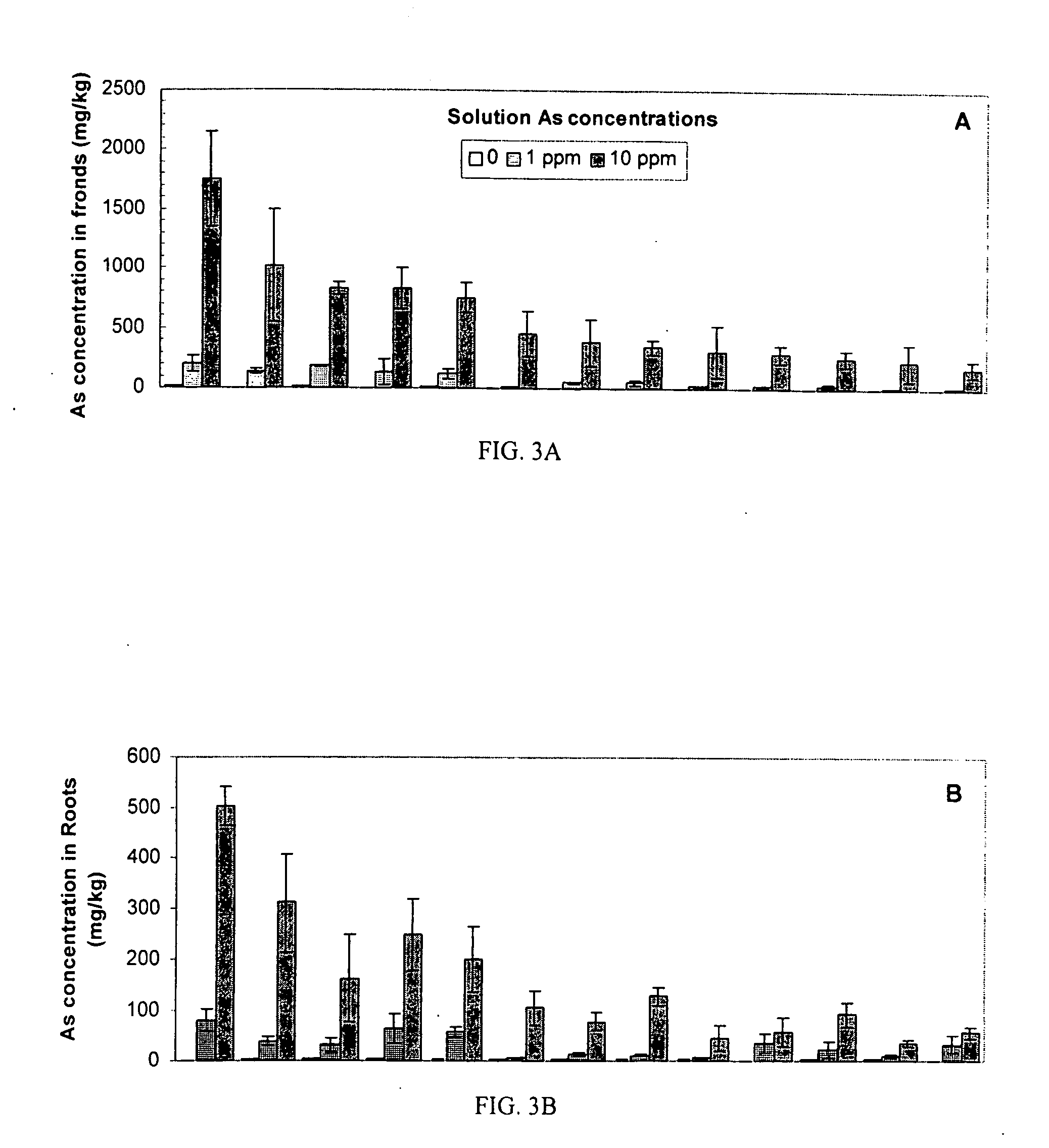Contaminant removal by additional ferns
a technology of ferns and ferns, which is applied in the direction of energy-based wastewater treatment, water/sewage treatment by ion exchange, borehole/well accessories, etc. it can solve the problems of no cost-effective and efficient way to clean up sites contaminated with arsenic, and arsenic is a prevalent contaminant, so as to remove arsenic-type pollutants and remove pollutants
- Summary
- Abstract
- Description
- Claims
- Application Information
AI Technical Summary
Benefits of technology
Problems solved by technology
Method used
Image
Examples
Embodiment Construction
[0037] Before explaining the disclosed embodiments of the present invention in detail, it is to be understood that the invention is not limited in its application to the details of the particular arrangements shown since the invention is capable of other embodiments. Also, the terminology used herein is for the purpose of description and not of limitation.
[0038] This invention is a Continuation-In-Part (CIP) of U.S. Ser. No. 10 / 825,993 filed Apr. 16, 2004, which is a Continuation-In-Part (CIP) of U.S. Ser. No. 10 / 756,237 filed Jan. 12, 2004, which is a Continuation-In-Part (CIP) of U.S. Ser. No. 09 / 948,969, filed Sep. 7, 2001, now abandoned, which is a Divisional Application of U.S. Ser. No. 09 / 546,941 filed Apr. 11, 2000, now U.S. Pat. No. 6,302,942, which is a Continuation-In-Part (CIP) of U.S. Ser. No. 09 / 471,566 filed Dec. 23, 1999, now U.S. Pat. No. 6,280,500, which claims the benefit of priority from U.S. Provisional Application Ser. No. 60 / 129,203, filed Apr. 14, 1999, all o...
PUM
| Property | Measurement | Unit |
|---|---|---|
| dry weight | aaaaa | aaaaa |
| length | aaaaa | aaaaa |
| concentrations | aaaaa | aaaaa |
Abstract
Description
Claims
Application Information
 Login to View More
Login to View More - R&D
- Intellectual Property
- Life Sciences
- Materials
- Tech Scout
- Unparalleled Data Quality
- Higher Quality Content
- 60% Fewer Hallucinations
Browse by: Latest US Patents, China's latest patents, Technical Efficacy Thesaurus, Application Domain, Technology Topic, Popular Technical Reports.
© 2025 PatSnap. All rights reserved.Legal|Privacy policy|Modern Slavery Act Transparency Statement|Sitemap|About US| Contact US: help@patsnap.com



